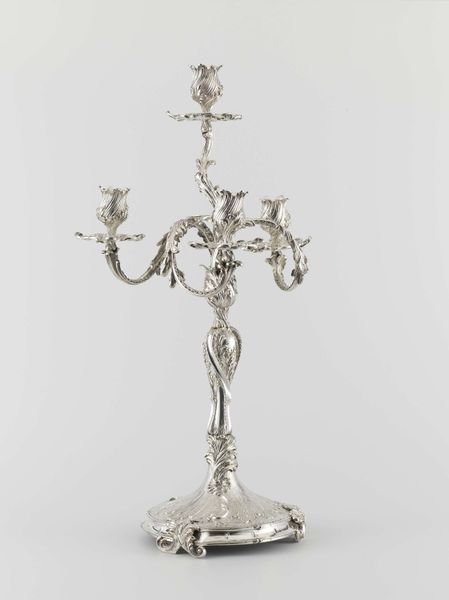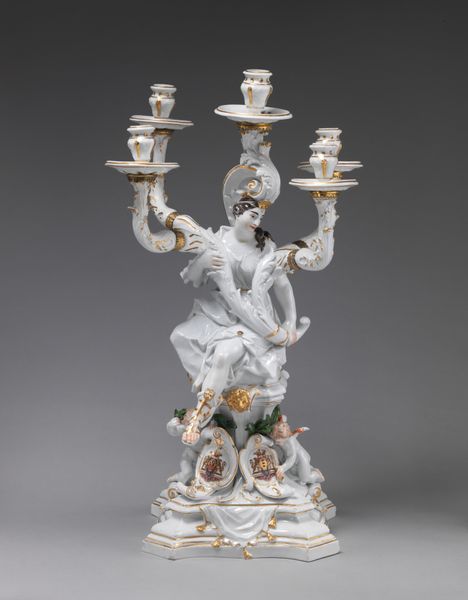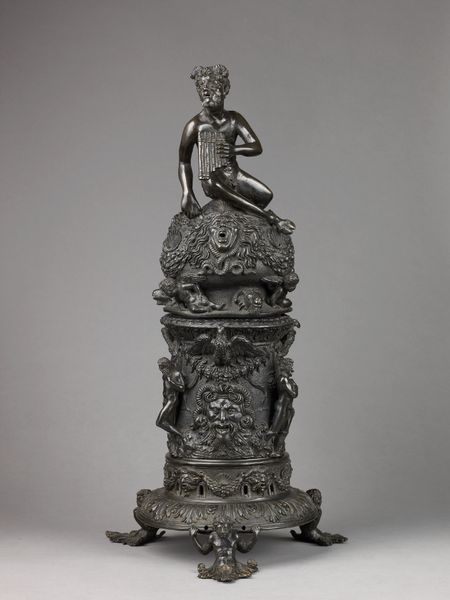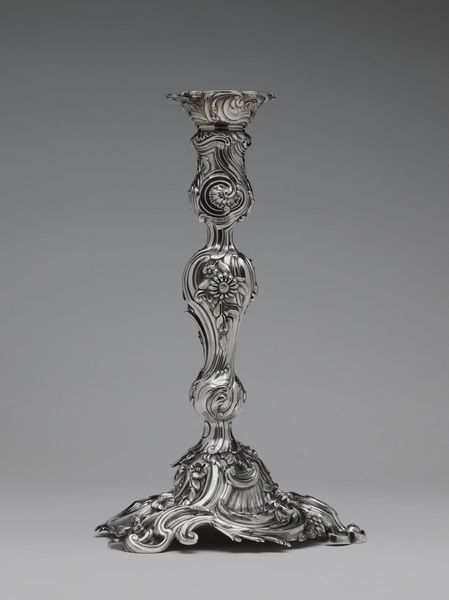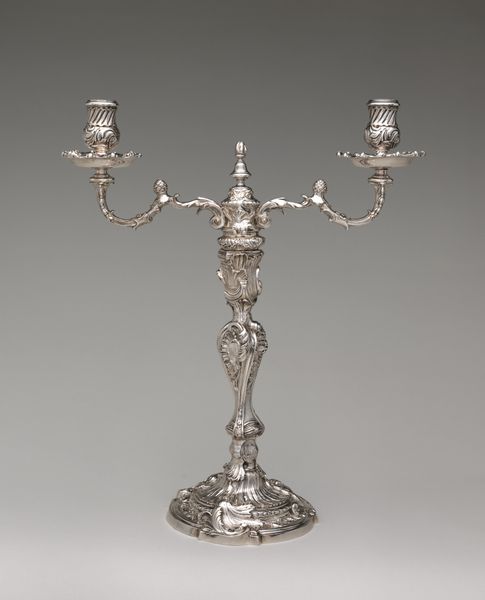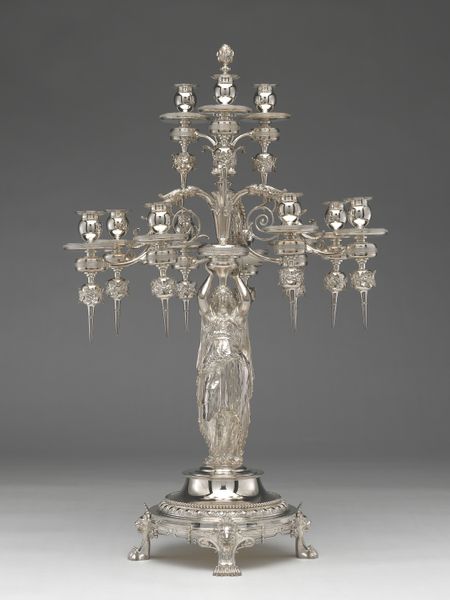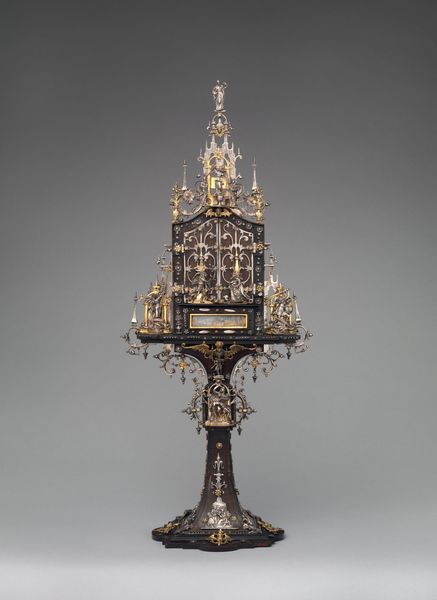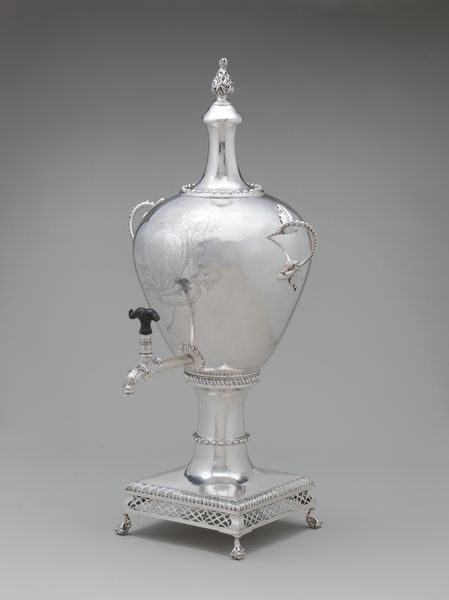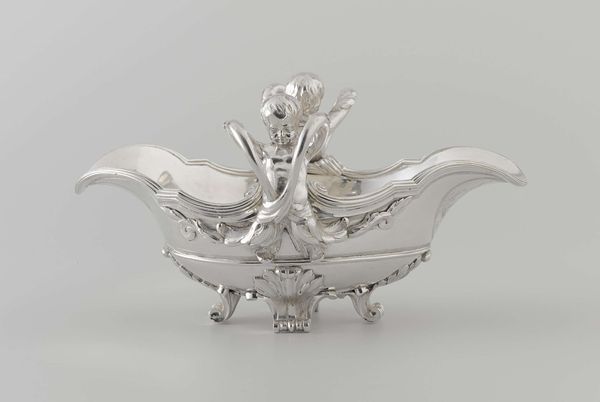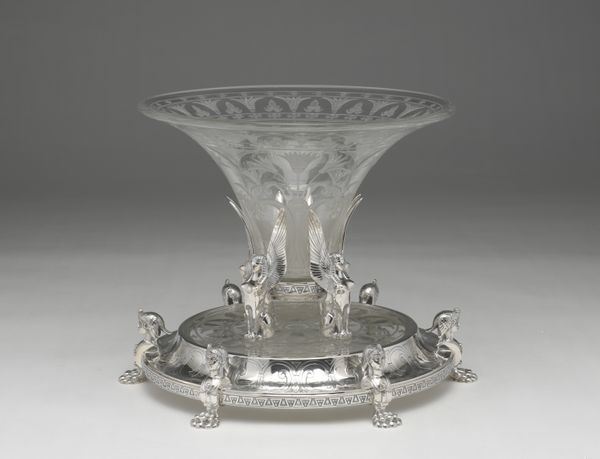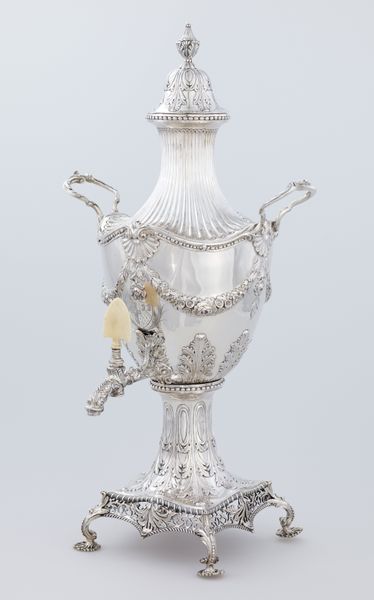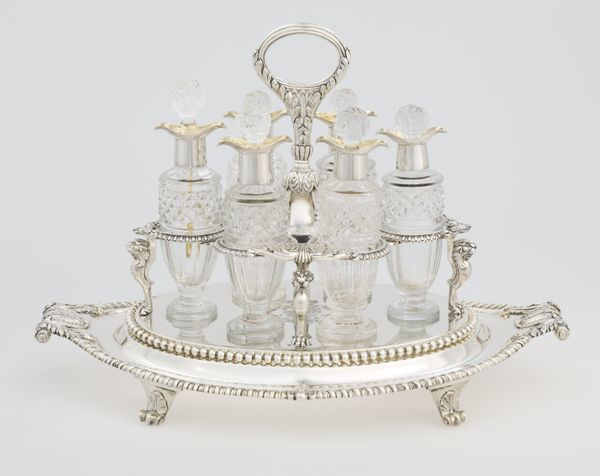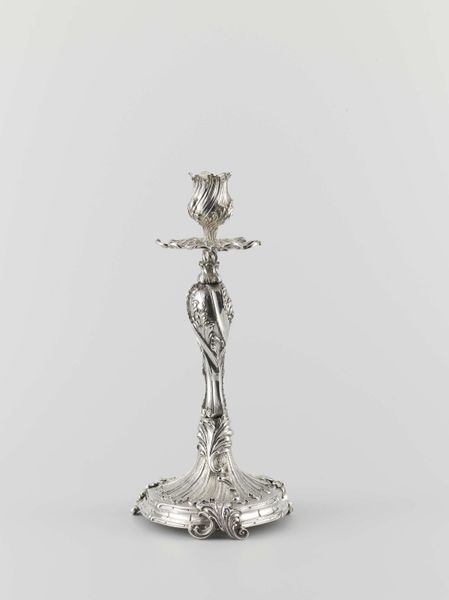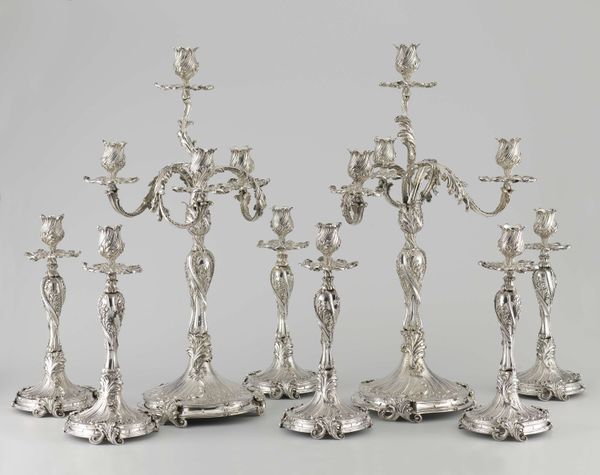
Dimensions: height 78 cm, width 69 cm, depth 57 cm
Copyright: Rijks Museum: Open Domain
This ornate centerpiece was crafted in the Netherlands by Johannes Mattheus van Kempen, and it's made of gleaming silver. The material itself speaks to the opulence of the era. Silver, with its inherent luster and malleability, was the perfect choice for creating such an elaborate piece. Consider the amount of labor involved: each curve, each flourish, each tiny detail meticulously shaped and polished. The silversmith would have employed a range of techniques like casting, chasing, and engraving to achieve the final result. But this isn't just about technical skill, it's about social context. Objects like these were status symbols, reflecting the wealth and power of their owners. The silver centerpiece would have dominated a dining table, reflecting candlelight and impressing guests with the owner's refined taste. This reveals the hierarchies of labor and class that underpinned this era. It encourages us to consider the relationship between artistry, industry, and social status.
Comments
No comments
Be the first to comment and join the conversation on the ultimate creative platform.
